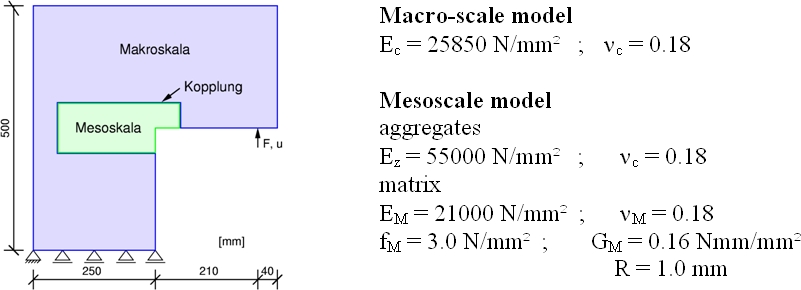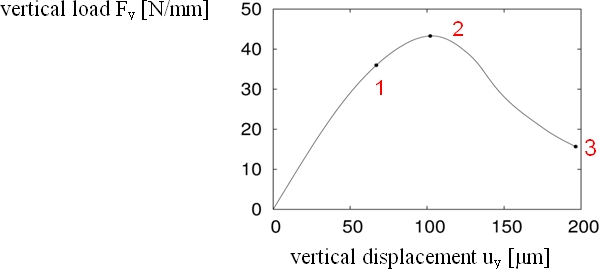Keywords: spatial and temporal multi-scale models, damage and fracture, multi-grid solver, heterogeneous materials, concrete.
The damage behaviour of heterogeneous materials, such as concrete, is often
described by continuum damage theories on the macro-scale, using homogenized
material parameters. These models have the advantage of being applied in
simulations of large-scale structures, but the experimental determination of
necessary material parameters, especially for the description of material damage
effects, is demanding and often a direct identification of these parameters is not
possible. Furthermore these models are not capable of describing all the physical
effects applying to the continuum theories, for example, the decohesion effects
between grain and matrix material. At the meso-scale the heterogeneous material
structure is described explicitly, representing the aggregates and the matrix material,
and thereby allowing a detailed description of the separate constituents. This paper
describes various aspects of simulating the damage effects of concrete materials in
heterogeneous multi-scale models, integrating aggregate-matrix models on the
meso-scale into continuum damage models for the macro-scale. Beginning with the
generation of grain-matrix models we will discuss numerical discretization
techniques. Different iterative schemes following the nonlinear response paths,
including softening branches and appropriate solver strategies such as multi-grid
solvers will be presented. The material description on the meso-scale will be
discussed, indicating the advantages of applied simulation techniques. Coupling
between models on different spatial scales, for example meso and macro-scales,
resulting into heterogeneous multi-scale models is proposed via constraint
conditions. Thereby it becomes possible to simulate large-scale constructional
components and to obtain detailed information on local micro-damage effects at the
same time. An example of a multi-scale simulation is shown in Figure
1. In this
example a priori information about the zone where the localised damage is expected
can be used. This information can, for example, be obtained by a linear analysis in
advance. The stress concentration in the corner region can be used as an indicator to
model the sub-region in the vicinity of the re-entering corner with a meso-scale
model, while the rest of the structure is kept as a macro-scale model.
Figure 1:
Heterogeneous multi-scale model.
|
|
The load is applied as displacement u at the lower right hand edge and is
increased incrementally. The constitutive law for the matrix material is coupling a
micro-plane model with an isotropic damage model for the softening regime. Figure 2
shows the propagation of the damage zone, starting from the reentering corner,
through the model for different load situations. The corresponding
load-displacement curve is given in Figure 3.
Figure 2:
Damage distribution in a multi-scale model for different load situations.
|
|
Figure 3:
Load-displacement curve for multi-scale analysis.
|
|
Similar strategies as applied for spatial multi-scale problems can be adopted for
simulation of temporal multi-scale problems, as found for example in concrete
creeping problems. The paper will give an outlook into adequate methods.
purchase the full-text of this chapter (price £20)
go to the previous chapter
go to the next chapter
return to the table of contents
return to the book description
purchase this book (price £95 +P&P)



